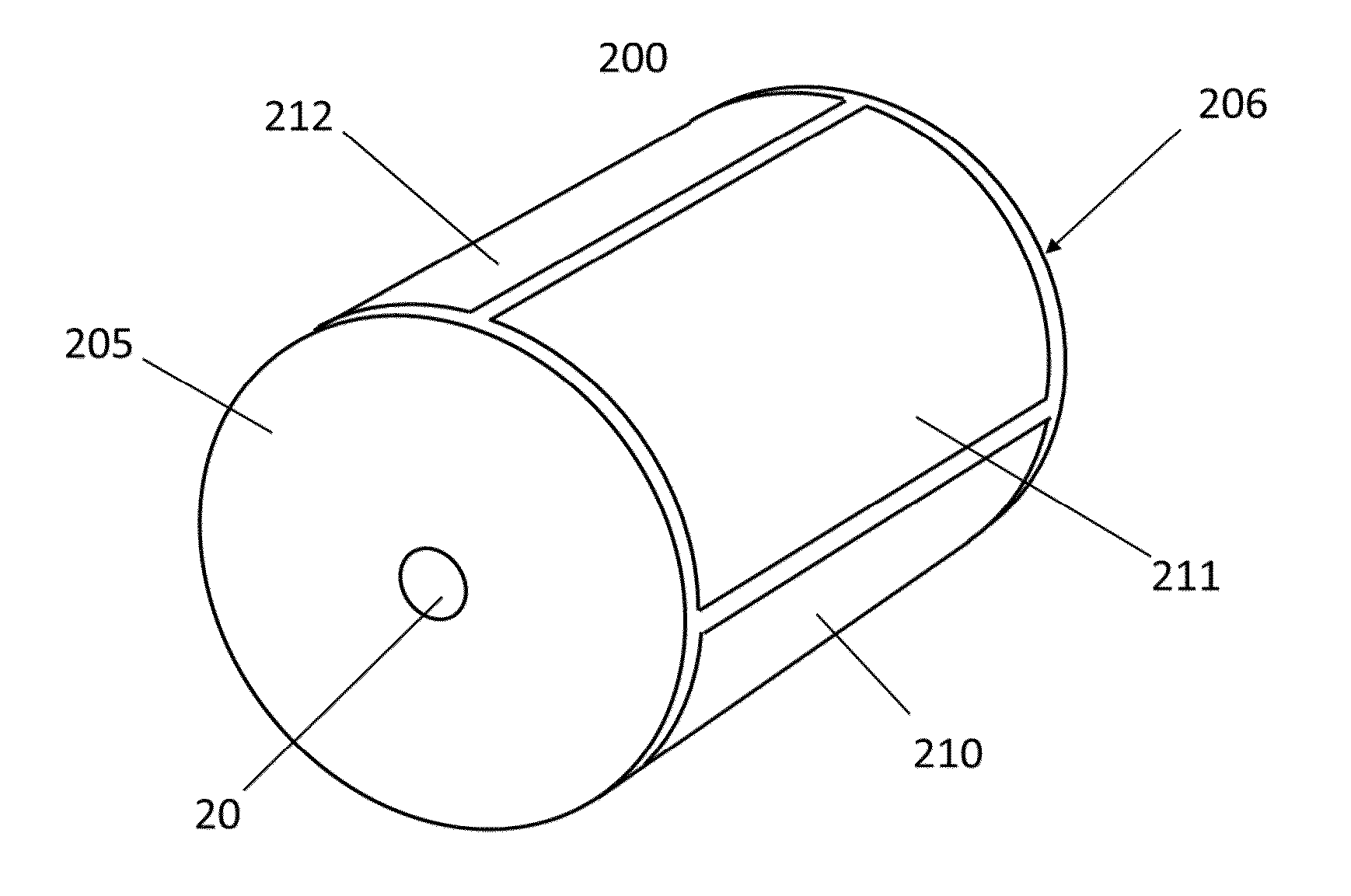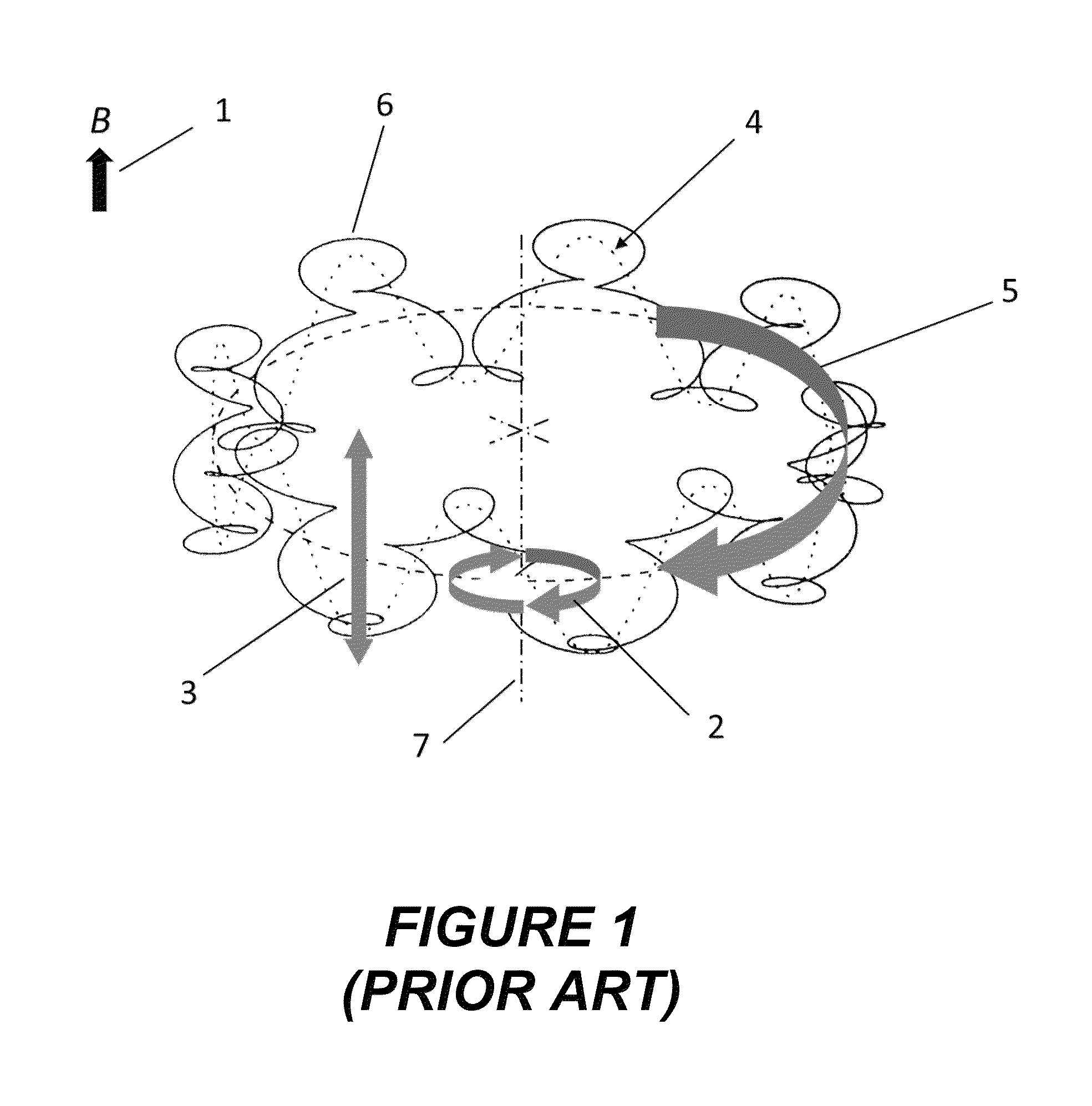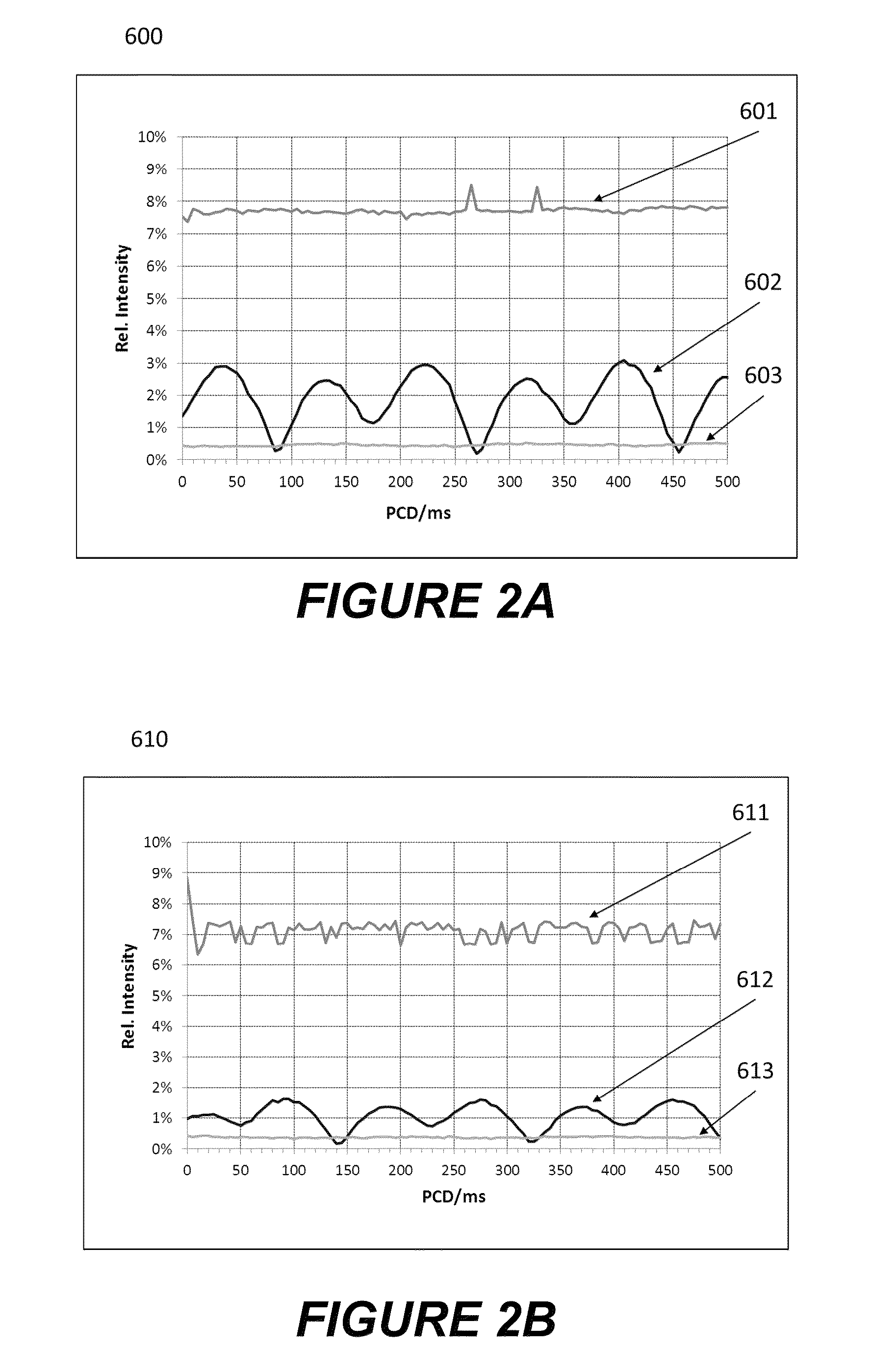Introduction of ions into ion cyclotron resonance cells
a cyclotron resonance and ion technology, applied in the direction of electron/ion optical arrangement, tube electrostatic deflection, particle separator tube details, etc., can solve the problems of deteriorating the conditions for a clean measurement of the cyclotron frequency, increasing the intensity of the peak, and impairing the detection signal. , to achieve the effect of reducing the magnetron orbi
- Summary
- Abstract
- Description
- Claims
- Application Information
AI Technical Summary
Benefits of technology
Problems solved by technology
Method used
Image
Examples
Embodiment Construction
[0053]The present invention aims at reducing the initial magnetron orbit of ions captured in the ICR cell by deflecting the ions in the ICR cell during the injection period.
[0054]The existence of the magnetron motion in the ICR cell normally produces weak sidebands around the main ion cyclotron resonance signal of an ion measured at the frequency νR which are visible on the frequency scale in a distance of the magnetron frequency νM and 2νM. Additionally, in the mass spectrum a peak with half the mass, i.e., with the doubled reduced cyclotron frequency 2νR can appear when the magnetron orbit center is not the ICR cell axis center. This is the second harmonic peak, its abundance being directly related to the displacement of the magnetron orbit center and ICR cell axis. This can happen when the electric trapping field axis is shifted in respect to the ICR cell axis. Another signal with comparable abundance appears next to the 2νR signal, which is a satellite peak with a frequency of (...
PUM
 Login to View More
Login to View More Abstract
Description
Claims
Application Information
 Login to View More
Login to View More - R&D
- Intellectual Property
- Life Sciences
- Materials
- Tech Scout
- Unparalleled Data Quality
- Higher Quality Content
- 60% Fewer Hallucinations
Browse by: Latest US Patents, China's latest patents, Technical Efficacy Thesaurus, Application Domain, Technology Topic, Popular Technical Reports.
© 2025 PatSnap. All rights reserved.Legal|Privacy policy|Modern Slavery Act Transparency Statement|Sitemap|About US| Contact US: help@patsnap.com



